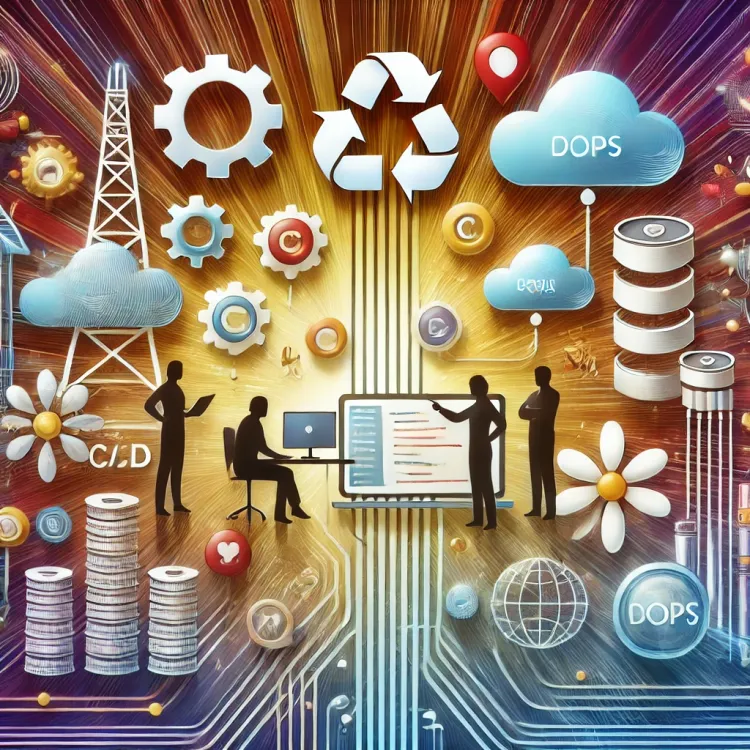The Fine Balance Between Product Improvements and Service in Software

In the fast-paced world of software development, there is a constant tension between innovating and improving your product and maintaining the high standards of service that your users expect. As your infrastructure grows, the challenge of balancing these two priorities becomes more pronounced. How do you ensure that your product evolves without sacrificing the quality and reliability of your services? In this post, we’ll explore how to strike that fine balance and keep both product improvements and service quality in harmony.
Understanding the Key Priorities
Product Improvements focus on enhancing the features, functionality, and user experience of the software. They’re about innovating and staying ahead of the competition. Product updates could include new features, bug fixes, or performance enhancements. These improvements aim to add value to the end user and differentiate your product in the market.
On the other hand, Service refers to the performance, stability, and reliability of the infrastructure that powers your product. It’s the behind-the-scenes magic that ensures your software is available, scalable, and secure. Service includes things like uptime, security patches, monitoring, load balancing, and disaster recovery.
When these two priorities clash, it can lead to performance degradation, system outages, or frustrated customers. Finding a balance that allows for both continuous product improvements and robust service management is the key to sustaining growth and user satisfaction.
1. Aligning with Business Goals and User Needs
The first step in balancing product improvements with service is to ensure that both align with your overarching business goals. Product improvements should be designed to meet user needs, stay competitive in the market, and address feedback. Meanwhile, service enhancements should focus on ensuring the system can handle increased user demand, maintain performance, and address security vulnerabilities.
Start by prioritizing based on user feedback and the current state of your infrastructure. Does your product need a new feature urgently, or is there a more pressing need for stability and performance improvements? Identifying which of the two—product or service—requires more immediate attention will help you make informed decisions.
2. Roadmapping for Success
A well-structured roadmap is one of the best tools to maintain this balance. Map out both your product and service improvements over time and ensure that both are accounted for. This doesn’t mean you have to tackle both at the same time, but you should have a plan that includes features and infrastructure updates in parallel.
To be most effective, roadmaps should be flexible. Business requirements, user feedback, and new technological advancements can cause shifts in priorities. Adaptability ensures that neither product nor service gets neglected in favor of the other.
3. Embrace Agile Development and DevOps
Agile development and DevOps practices are powerful allies when balancing product development and infrastructure. Agile methodologies encourage iterative development, allowing you to push product updates quickly without overhauling the entire system. This approach enables teams to release smaller, incremental changes, which are easier to test and deploy while keeping service disruption minimal.
Incorporating DevOps practices helps streamline the operations side by automating repetitive tasks such as testing, monitoring, and deployment. This frees up time and resources to focus on product innovations while maintaining service reliability. When both product and service improvements are integrated into a DevOps pipeline, the workflow becomes more efficient and aligned.
4. Automate and Monitor
Automation plays a huge role in ensuring service reliability without consuming unnecessary resources. By automating tasks like deployments, testing, and infrastructure provisioning, you can increase efficiency, reduce human error, and free up your teams to focus on meaningful improvements.
Additionally, consistent monitoring of your infrastructure and performance metrics allows you to spot potential issues before they become critical. Tools like application performance monitoring (APM) and log aggregation systems give you real-time insights into both service performance and user behavior, helping you make data-driven decisions for future product and service enhancements.
5. Don’t Ignore Technical Debt
In the race to release new features or product improvements, it’s easy to neglect technical debt—those small inefficiencies, workarounds, or unrefined processes that accumulate over time. However, ignoring technical debt can slow down future development, reduce system performance, and make it harder to maintain high service standards.
It’s crucial to allocate time for regular refactoring of code, revisiting architecture decisions, and addressing underlying infrastructure issues. By addressing technical debt as part of your continuous improvement process, you’ll keep both your product and service in a healthy, scalable state.
6. Communication is Key
When balancing product and service, clear communication with stakeholders is essential. Whether it’s informing internal teams or communicating with customers, setting expectations around release schedules, service updates, and maintenance windows will help manage potential disruptions. Being transparent about changes and improvements will also foster trust and align everyone on the common goals.
7. Measure and Adapt
The balance between product improvements and service should be dynamic, not static. Metrics and key performance indicators (KPIs) can help you understand whether you’re achieving the right balance. For example, you might track:
- Service KPIs: Uptime, response time, and system health
- Product KPIs: Feature usage, bug count, user satisfaction
By measuring progress in both areas, you can adjust your strategy based on real data. A well-balanced approach means being able to shift focus when necessary—if one area starts lagging behind or if a critical issue arises.
Conclusion
In software infrastructure, achieving a balance between product improvements and service is not always straightforward. It requires thoughtful planning, flexibility, and a commitment to both innovation and reliability. By aligning with business goals, embracing agile methodologies, automating key processes, addressing technical debt, and maintaining clear communication, you can ensure that both your product and your service evolve in harmony. This delicate balance is essential to delivering lasting value to your users while keeping your infrastructure robust and scalable.




